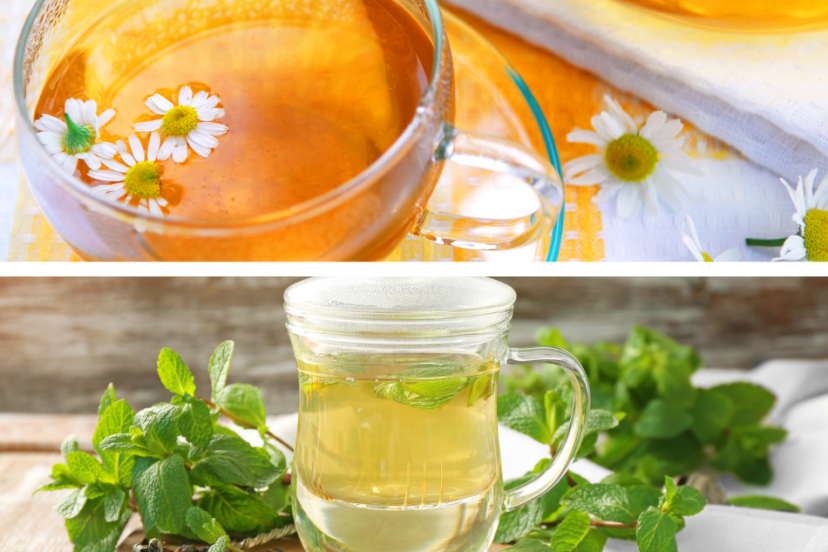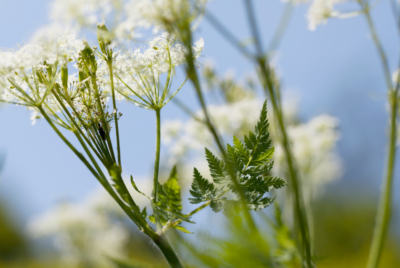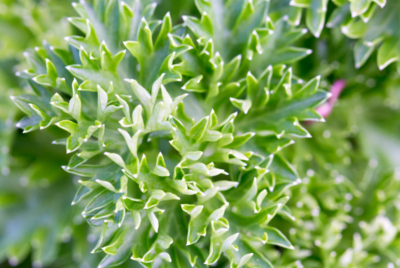Lemon Balm vs. Chamomile
Lemon Balm vs. Chamomile
1.Introduction: Lemon Balm vs. Chamomile

Lemon Balm vs. Chamomile: This comparison will dive into the world of herbal remedies, specifically looking at lemon balm and chamomile. Renowned for their calming properties and numerous health benefits, traditional medicine has used these two plants for centuries. This blog post will highlight the unique characteristics of each herb, their potential uses, and how they differ in taste, aroma, and effects on the body.
Whether you’re looking to ease stress, improve sleep, or simply enjoy a soothing cup of tea, understanding the differences between lemon balm and chamomile can help you choose the best option for your needs.

Key Takeaways: Lemon Balm vs. Chamomile
- Lemon Balm: Contains calming properties that may help with stress and anxiety relief.
- Chamomile: Known for its relaxing effects and ability to aid in improving sleep quality.
- Different Uses: People commonly use Lemon balm to reduce stress and improve cognitive function, while they often use Chamomile to promote relaxation and better sleep.
1. Lemon balm may help with stress and anxiety relief.
2. Chamomile is known for its calming and sedative effects.
3. Lemon balm is commonly used in aromatherapy.
4. Chamomile tea can aid in promoting sleep and relaxation.
5. Lemon balm may improve cognitive function and memory.
6. Chamomile has anti-inflammatory and antioxidant properties.
2.Lemon Balm: A Citrus-Scented Herb
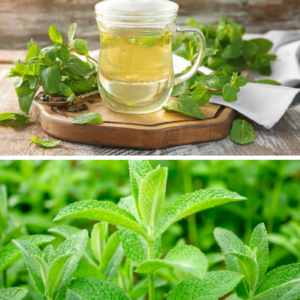
While both lemon balm and chamomile are popular herbal remedies, lemon balm stands out for its refreshing citrus scent and unique properties.
2.1. What is Lemon Balm?
Lemon balm is rich in essential oils, including citronellal and geranial, which give it its distinct citrus fragrance. It is commonly used in teas, tinctures, and essential oils for its soothing properties that promote relaxation and uplift the mood.
2.2 Uses and Benefits of Lemon Balm
Balm is often used to reduce stress and anxiety, improve sleep quality, and alleviate digestive issues such as bloating and indigestion. Its calming properties make it a popular choice for those looking for a natural way to relax and unwind after a long day.
Lemon balm is also believed to have antiviral and antibacterial properties, making it a popular remedy for cold sores and minor skin irritations. Additionally, its antioxidant properties support overall health and well-being, making it a versatile herb to have in your herbal medicine cabinet.
3.1. What is Chamomile?
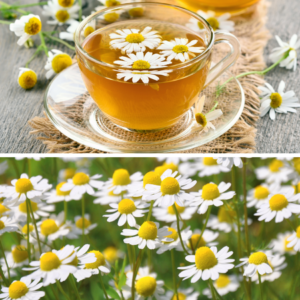
Chamomile: A Gentle, Soothing Plant. Chamomile, known for its delicate daisy-like flowers and gentle fragrance, is a versatile herb that has been used for centuries in various traditional remedies. There are two main types of chamomile: German chamomile (Matricaria chamomilla) and Roman chamomile (Chamaemelum nobile), both known for their calming properties.
3.2. Uses and Benefits of Chamomile
One of the most popular uses of chamomile is as a natural remedy for promoting relaxation and reducing stress. Chamomile tea is a popular bedtime beverage known for its calming properties, helping to promote better sleep and relaxation.
Chamomile is also used topically in skincare products for its anti-inflammatory and antioxidant properties. It can help soothe skin irritations, such as eczema and sunburns, making it a staple ingredient in many skincare routines.
For instance, chamomile is sometimes used in aromatherapy to alleviate anxiety and promote a sense of calmness. Its gentle fragrance and therapeutic properties make it a popular choice for those seeking natural stress relief.
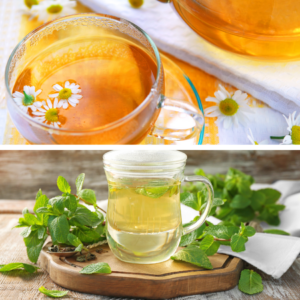
4. Comparing Lemon Balm and Chamomile
To tea enthusiasts and herbal remedies enthusiasts, lemon balm and chamomile are two popular choices. Both herbs are well-known for their calming properties and health benefits. However, they have distinct flavors and uses that set them apart. Let’s explore the similarities and differences between these two herbal powerhouses.
4.1. Similarities and Differences
Any aficionado of herbal teas can appreciate the soothing qualities of both lemon balm and chamomile. Lemon balm is a member of the mint family, boasting a subtle lemony flavor and a refreshing aroma. On the other hand, chamomile has a delicate apple-like taste and is renowned for its calming properties. While both herbs are commonly used to promote relaxation and relieve stress, they each bring a unique twist to your tea cup.
Between lemon balm and chamomile, the choice ultimately comes down to personal preference. People may prefer Lemon balm for its uplifting citrus notes and potential digestive benefits. Meanwhile, many choose Chamomile for its mild, floral flavor and its effectiveness in easing anxiety and aiding sleep. Regardless of the herb you select, you’re set to enjoy a soothing cup of tea brimming with health benefits.
4.2. Choosing Between the Two
Between lemon balm and chamomile, consider your taste preferences and the specific benefits you are seeking. If you enjoy the invigorating touch of citrus and want to support digestive health, lemon balm might be the perfect choice for you. On the other hand, if you prefer a mellow floral infusion that can help you unwind after a long day, chamomile could be your cup of tea.
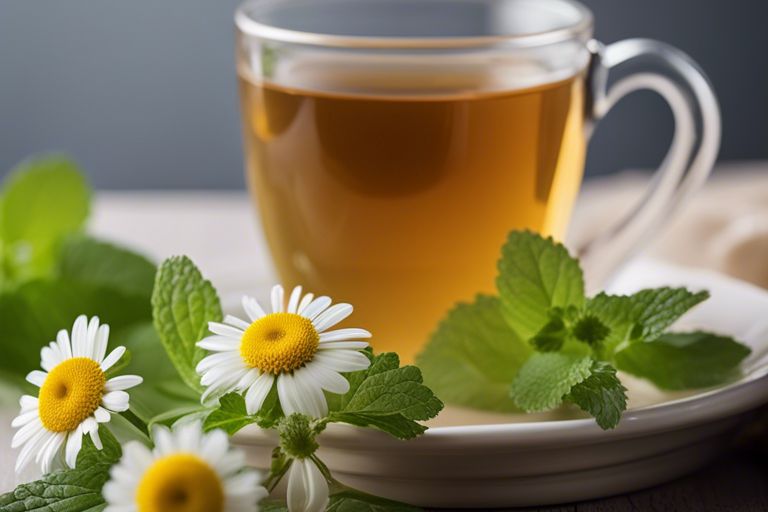
5. To wrap up
To conclude, both Lemon Balm and Chamomile provide a variety of health benefits and have served traditional medicine for centuries. Lemon Balm stands out for its calming effects and potential to enhance cognitive function, whereas Chamomile earns recognition for promoting relaxation and aiding digestion. Whether you prefer the citrusy flavor of Lemon Balm or the floral taste of Chamomile, incorporating these herbs into your daily routine can not only enhance your well-being but also add a delightful touch to your favorite beverages. So, why not try both and enjoy the soothing benefits of these natural remedies?
6.FAQs on Lemon Balm vs. Chamomile
1: What is Lemon Balm?
A: A perennial herb in the mint family, Lemon balm boasts a lemony fragrance and often serves for its calming effects.
2: What is Chamomile?
A: Originating from the daisy-like flowers of the Asteraceae plant family, Chamomile is celebrated for its soothing and relaxing properties.
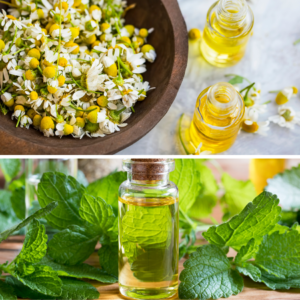
3: How do Lemon Balm and Chamomile differ?
A: Lemon balm, with its citrusy flavor, mainly aims to enhance relaxation and alleviate stress. In contrast, chamomile, known for its earthy, floral taste, primarily helps with sleep and digestion.
4: Can you use Lemon Balm and Chamomile together?
A: Combining lemon balm with chamomile can craft a soothing herbal tea blend that promotes relaxation and overall well-being.
5: What potential side effects do Lemon Balm and Chamomile have?
A: While most people safely enjoy lemon balm and chamomile in moderation, some may face allergic reactions or medication interactions. Consulting a healthcare provider before regular use is advisable.
